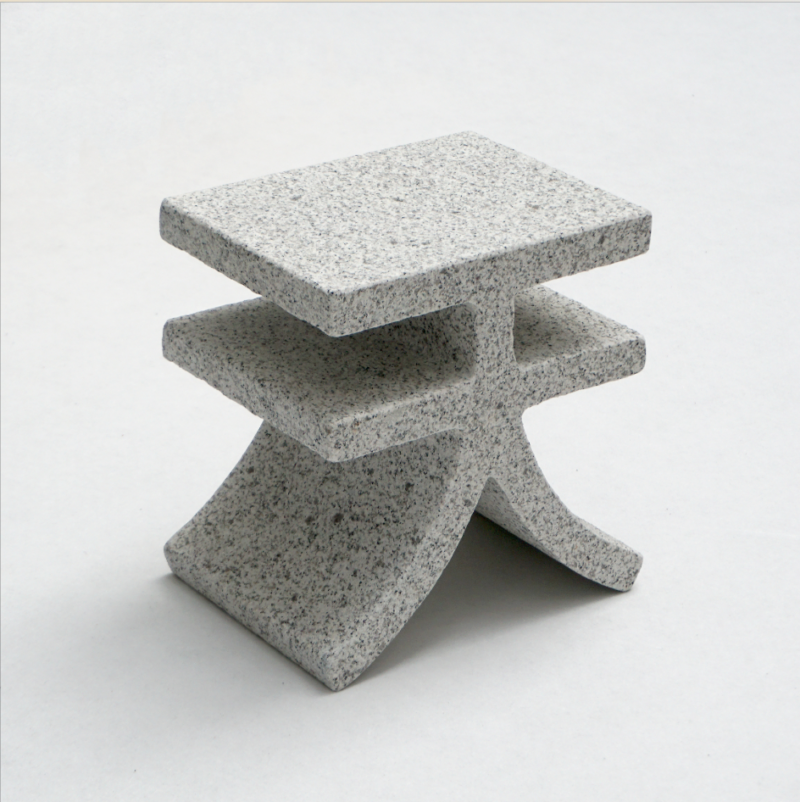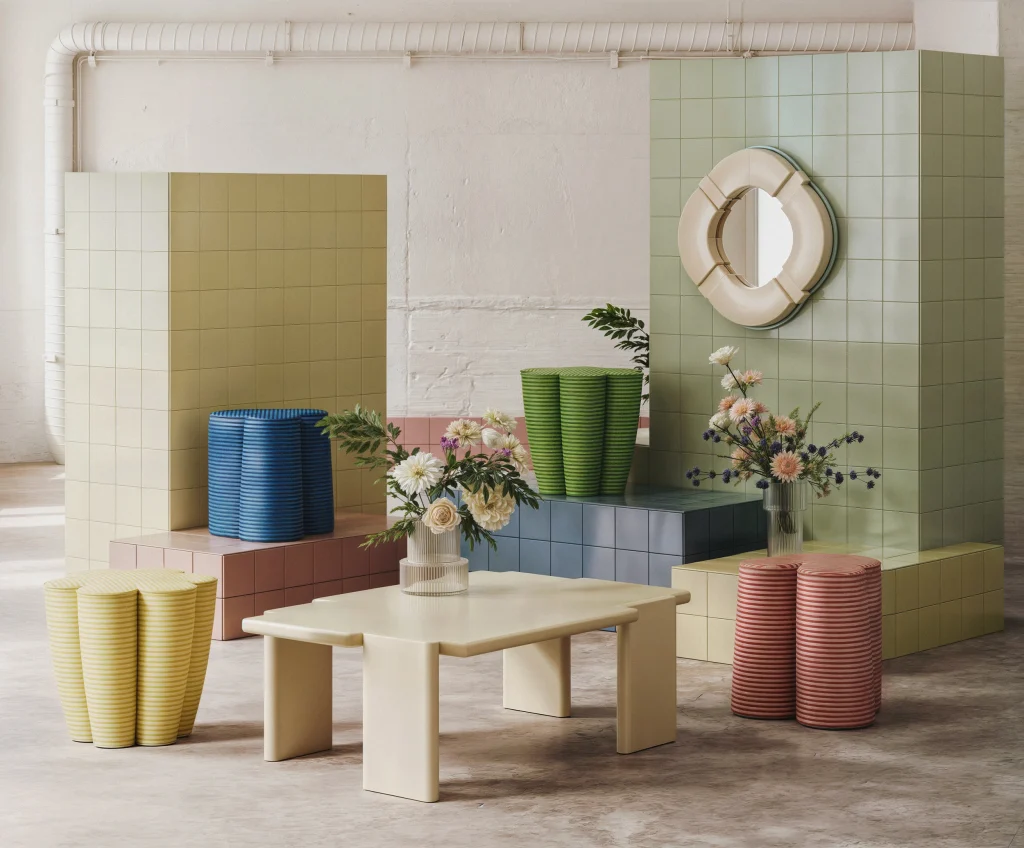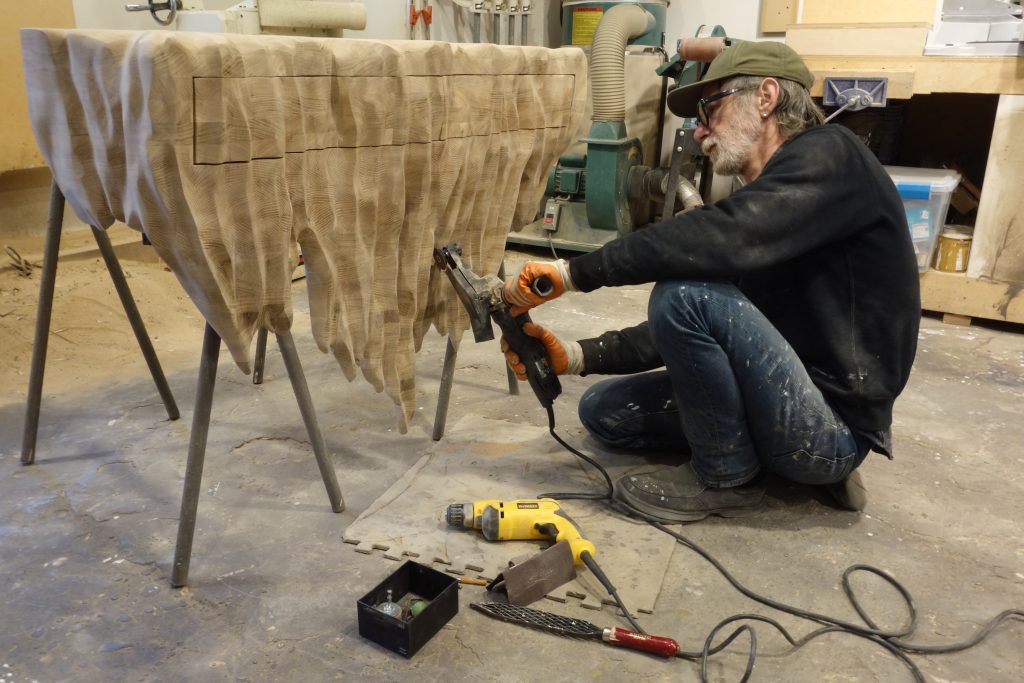
Tornasol Studio: Bridging Functional Design with Playful Aesthetics
“The common denominator of all our designs is desire. Almost everything we do comes from very concrete concepts or gestures, details and experiences that we gather from our environment and translate into everyday objects. We seek to transmit those sensations through design.”
– Inés Llasera & Guillermo Trapiello of Tornasol Studio
View all of Tornasol Studio’s work, including “Pool” Chair
The idea of Spanish design brings to mind bright colours, bold patterns, and artesianal craftsmanship – all notions which are applicable in the contemporary collectible scene. As described by journalist and curator Ana Dominguez Siemens, this current moment in Spanish design is also focused on craft tradition, multidisciplinarity, and individuality. The combination of traditional approaches and individual perspectives is one which permeates many different contemporary design scenes, influencing how we discuss what the “traditional” is and how it is utilised or spoken of in the present moment. It is through the interplay of these notions that designers can draw inspiration, matching their own artistic personalities with techniques, forms, and materials that have long, storied histories within their design scenes. This is also a space in which designers can think “outside of the box”, claiming inspiration from collective memories, evocative emotional responses, and personal inquiries.
Integrating viewer experience, playful design, and natural phenomena, Tornasol Studio presents an eclectic practice focused on materiality, visual metaphor, and experiential experimentation. Designers Inés Llasera and Guillermo Trapiello of the Madrid-based studio combine their backgrounds in product design and architecture to create projects which connect directly to the viewer’s senses, emotions, and perceptions. Their playful approach to design draws inspiration from popular references, individual memories, and cultural interactions. From functional pieces reminiscent of summer swimming sessions (“Pool” Chair), to whimsical lighting emitting sunset colours (“Sunset” Lamp), to seating with references to childhood games (“Mikado” Bench), Tornasol is able to connect their curiosity for design with strong craftsmanship, drawing viewers to experience each projects’ innate phenomena themselves.
With reference to your backgrounds in product design and architecture, can you describe how you’ve come together to develop Tornasol Studio’s design practice?
We started working together in our workshop four years ago. At that time, we were especially curious to build things and learn from practice. After collaborating on several projects, and after not much [time], we ended up sharing everything, studio included. Our common interest in crafts, nature, and design history got us together really quick.
Tornasol Studio is the mix between formations, concerns, and experiences of both. We have found in object design the perfect intersection to develop our ideas.
How would you describe your practice in relation to the larger, contemporary Spanish design scene?
We are living good times in design as there are many eyes upon what is being done here. Some of us are focusing our practice on what is called ”functional art or art design”, pieces halfway between furniture and sculptures. Our philosophy is to create unique pieces by playing with visual metaphor, material identity, and experimentation, without losing functionality.
Your work often draws inspiration from different traditions, cultures, and materials – what is the greatest influence for you as designers from these sources?
The common denominator of all our designs is desire. Almost everything we do comes from very concrete concepts or gestures, details and experiences that we gather from our environment and translate into everyday objects. We seek to transmit those sensations through design.
We like to work with visual metaphor, everyday situations that somehow amaze us. We look for popular references that are also interesting for us because of their materiality, evocative power, or, simply, because of their symbolic value.
We surround ourselves with books, objects, materials, tools, and models, which together work as a sample book both of memories and of opportunities.
Pieces like “Pool” Chair, “Sunset” Lamp, and “Drift” Armchair shift common understandings of material and form in a very playful way – why have been you drawn to this experimental and playful aspect of design and how does it shape your design process?
One of [the] recurring themes in our work is to look for materials and references outside of conventional design and bring them into everyday life; in that journey, new ways of living objects appear. In the case of the “Pool” Chair, this is done in a very evident way by extrapolating the geometry, technique, and finishes of prefabricated pools to the world of chairs. This literalness with which we treat the concept brings the user closer to the design and produces an almost immediate connection.
What do you see in the future of contemporary, collectible Spanish design?
We believe that we are living in a moment of great opportunity, both on an industrial and a communication level. In Spain, thanks to the real estate boom, there are many companies dedicated to the [manufacturing] of construction components, the challenge for us designers is to use these tools to transport existing knowledge to the world of product design.
We have been working with Spanish and Portuguese craftsmen, great professionals, people with whom you learn a lot, brands that are willing to accept atypical jobs, who like challenges and who master technique.
It is also important to understand that the crafts of the future operate with inputs beyond manual work and the workshop itself, we could call it digital crafts: the intersection between traditional crafts, high technology, and [multidisciplinarity]. Therefore, this way of working is in the process of being redefined and we believe that it is important to leave behind the romantic vision in which for something to be purely artisan it has to be ultra-specialized or there should be no machines involved. We find it much more interesting to work on the border between traditions, experimentation, and the composition of knowledge, mixing technologies and interests far [beyond] the label of what we understand as craftsmanship today. This mixture of processes gives us the opportunity to produce experimental pieces that, although being sculptural, still maintain their functionality.
Where do you see yourselves in this future?
Our goal as a studio is to become a platform capable of taking risks and from which we can experiment and investigate by mixing our own interests with the collective imaginary. We would like, over the years, to extend our range of action in order to have an even greater perspective of the world we live in and to be able to apply our design approach to increasingly global and interconnected needs.
Bio
Tornasol Studio is an architecture and product design studio based in Madrid. We do projects in which emotional relationships are established through perception and symbolism. Our work focuses on the study of natural phenomena and their relationship with users: light, sound, movement, materiality, color, scale and proportion. We work with our clients to materialize wishes through technique and imagination. We collaborate with publishers, producers, other architecture studios, and communication agencies.
Founded by Inés Llasera and Guillermo Trapiello in 2017.



















Responses